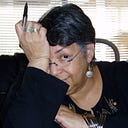Zora and Cudjo: A Slave Narrative Publication Long Delayed
After nearly nine decades, a rejected manuscript of African-American writer and anthropologist Zora Neale Hurston (1891–1960) has finally been resurrected and published. Barracoon: The Story of the Last “Black Cargo”, Hurston’s account of the transatlantic slave trade, is largely based on interviews she conducted in 1927 with Cudjo Lewis (1841–1935), born Oluale Kossola, the last living survivor of the Middle Passage.
This publication coincides with the recent discovery of the wreckage of the slave ship, Clotilda in Mobile, Alabama, nearly 160 years after it was deliberately sunk. The vessel was the last ship known to smuggle African captives to the U.S., in spite of the 1807 Act Prohibiting Importation of Slaves. But Timothy Meaher, a wealthy businessman and steamboat captain, accepted a wager that he could not successfully transport “a bunch of nigger slaves without getting caught”. And with his accomplice, the captain of the Clotilda, William Foster, they successfully made the illegal voyage and immediately ordered the sinking of the ship in order to hide their crime.
Journey of the Clotilda, 1860
After having been brutally kidnapped from their African homeland, and spending six tortured weeks in grotesquely inhumane conditions in the underbelly of the ship, the group of traumatized men, women, and children were then dispersed and delivered to surrounding areas in Alabama where they were displayed on auction blocks, then sold and put to work in unpaid servitude for new masters.
Amazingly, in 1927, the ship’s lone survivor, Cudjo Lewis, recalling with remarkable clarity, shared with Zora Neale Hurston, his experiences during the Middle Passage, his later life, and the founding and building of the slaves’ own community, AfricaTown, Alabama.
“If you won’t send us home, we’ll build Africa right here in Alabama.”
In spite of the perpetrators’ attempts to hide the crime, as well as the long-hidden history, spirits of the ghosts of the Clotilda would not rest forever. Long ago, facing the unknown, the captives endured and survived unimaginable horrors. But from their strength, resilience and endurance came their proud descendants who have found hope in their heritage, and honor in preserving their forefathers’ legacy by moving forward and continuing to preserve their AfricaTown community in Mobile.
The slave ship that wasn’t meant to be found
Commenting on the discovery of the Clotilda, acclaimed historian of the African diaspora, Sylviane Diouf, says: “It’s the best-documented story of a slave voyage in the Western Hemisphere.” Diouf’s own 2007 book, Dreams of Africa in Alabama: The Slave Ship Clotilda and the Story of the Last Africans Brought to America also chronicles the Clotilda’s saga.
The Plagiarism Controversy
Numerous historians are in agreement that although Zora Neale Hurston did conduct extensive interviews with Cudjo, it was actually Emma Langdon Roche (1878–1945) who was first granted access to the survivor and published his recollections in The Last Voyage of the Clotilda, the True Story of the last Slave Ship Voyage. The Mobile Alabama-born writer and artist also wrote Historic Sketches of The South (1914) which contained her sketches of the freed slaves then living in AfricaTown.
A Personal Connection: My family’s Alabama history.
Thirteenth Census of the United States
My family hails from Montgomery, Alabama, and our ancestral roots lie deep in Alabama soil. Both sets of my grandparents were born in Montgomery within a few years after the ship’s arrival, and I am almost certain that there is a definite ancestral lineage. Moreover, according to names and dates I have viewed on the Thirteenth United States Federal Census on file at the Alabama Department of Archives and History in Montgomery, it is highly likely that somewhere among the slaves onboard the Clotilda, shackled and huddled in the underbelly as human cargo, were my ancestors. Man, woman or child, from whom I descend. Reaping the great harvest of their struggles and life’s work.
The stain of slavery, America’s greatest shame, can never be erased. It has been allowed to permeate the very fabric of this nation. But out of sustained acts of hatred, immorality, greed, and evil, sprang forth millions of strong African-American families, and we are all living testaments of our ancestors’ will to survive and overcome. By keeping their stories alive, we honor their legacy.
My maternal grandparents’ marriage license.
On July 12, 1892, 21-year-old Elijah Hartwell Frazier, a.k.a. “Lige” and 15 -year-old Carrie Louise Reese, a.k.a. “Sis”, exchanged marriage vows in the garden of one of his properties in Montgomery. Five children, 3 sons, and 2 daughters were born of the marriage. Elijah Jr. in 1895, Leonzie in 1898, Hattie in 1900, Lumpkin in 1908, and my mother, Alberta in 1910.
